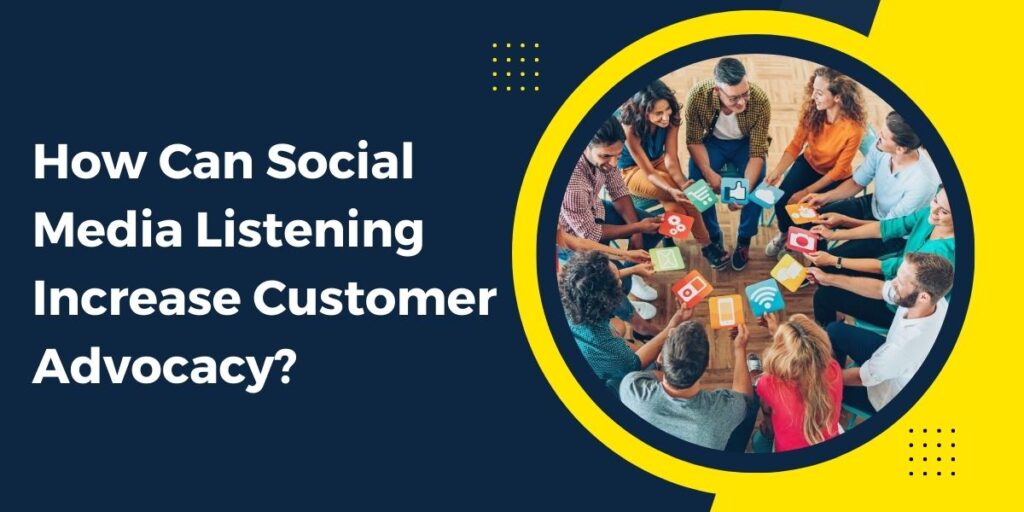In today’s fast-paced digital world, connecting with customers is more important than ever. One powerful tool businesses can use is social media listening. This means paying attention to what people are saying about your brand online. By listening to customers’ thoughts and feelings, companies can build stronger relationships and create loyal advocates.
This blog will explore how social media listening can increase customer advocacy, making it easier for brands to understand their audience and respond to their needs. Let’s dive into the benefits and best practices that can transform customer interactions.
Why actually is Social Media Listening?
Social media listening is the practice of monitoring and analyzing conversations about a brand or topic across social media platforms. It involves more than just checking comments or likes; it’s about collecting valuable insights from what people are saying online.
How Does It Work?
Social media listening tools scan various platforms like Twitter, Facebook, and Instagram for mentions of your brand. They track keywords, hashtags, and even sentiment (positive or negative feelings). This helps businesses gather a complete picture of what customers think and feel.
The Link Between Social Media Listening and Customer Advocacy
Social media listening is more than just keeping an eye on what people say about your brand. It’s about understanding your customers and building strong relationships with them.
Building Stronger Relationships
One of the biggest benefits of social media listening is that it shows your customers you care. When you actively listen and respond to their comments or concerns, it makes them feel valued.
For example, if someone praises your product or shares a concern, a thoughtful response can make them feel special. This engagement not only fosters loyalty but also encourages customers to advocate for your brand, sharing their positive experiences with others.
Identifying Loyal Customers
Social media listening helps businesses spot their most loyal customers. By tracking conversations, you can identify individuals who truly love your brand. These customers are often eager to share their positive experiences, becoming your brand advocates.
Encouraging Positive Word-of-Mouth
When customers feel heard and appreciated, they are more likely to talk positively about your brand. Social media listening allows you to engage with them, encouraging them to share their experiences online. This word-of-mouth marketing can be incredibly powerful, as potential customers often trust recommendations from friends and family more than traditional advertising.
Benefits of Social Media Listening for Customer Advocacy
Social media listening is a powerful tool that can transform how businesses interact with their customers. Here are some key benefits of social media listening for customer advocacy:
- Creates a connection by making customers feel heard.
- Helps find loyal customers who promote the brand.
- Encourages sharing of positive experiences, boosting brand visibility.
- Allows businesses to make quick adjustments, showing customers their opinions matter.
- Tracks negative feedback to address issues swiftly.
- Builds trust and transparency, turning unhappy customers into loyal ones.
- Helps businesses adapt strategies and products to stay relevant.
Best Practices for Effective Social Media Listening
To make the most of social media listening, it’s important to follow some best practices. By doing so, businesses can fully enjoy the benefits of social media listening. Here are some key tips:
Set Clear Goals
Before diving in, know what you want to achieve with social media listening. Are you looking to understand customer opinions about your products? Or do you want to track your brand’s reputation? Setting specific goals helps you focus your efforts and measure success.
Choose the Right Social Media Listening Tools
There are many social media listening tools available that can make your job easier. Look for tools that fit your needs, whether it’s tracking mentions, analyzing sentiment, or gathering data from different platforms. Popular options include Hootsuite, Brandwatch, and Sprout Social. These tools can help you gather insights quickly and efficiently.
Engage with Your Audience
Listening is not just about collecting data; it’s about engaging with your audience, too. Respond to comments and messages promptly. Show appreciation for feedback, whether it’s positive or negative. When customers see that you care about their opinions, it strengthens their loyalty and trust in your brand.
Analyze and Act on Insights
Collecting data is just the beginning. To truly benefit from social media listening, you need to analyze the insights you gather. Look for trends and patterns in what people are saying. Use this information to improve your products, services, or customer experience. Taking action shows customers that their voices matter.
Monitor Trends and Competitors
Keep an eye on industry trends and what your competitors are doing. Social media listening tools can help you identify popular topics of conversations in your market. This knowledge can guide your marketing strategies and help you stay relevant.
Train Your Team
Ensure that your team understands the importance of social media listening. Provide training on how to use social media listening tools effectively. Encourage them to share insights and collaborate on ways to improve customer engagement based on the data collected.
Review Regularly
Social media is always changing, so it’s essential to review your listening strategies regularly. Check if your goals are still relevant and if your tools are meeting your needs. Adapt your approach based on new trends and feedback from your audience.
Final Words
In summary, social media listening is a powerful tool that can significantly enhance your brand’s connection with its audience. By actively monitoring conversations and feedback, businesses can gain valuable insights into customer preferences, needs, and sentiments. As you reflect on your own social media strategies, consider integrating listening practices into your routine. By doing so, you can create a more responsive and customer-centric brand that not only meets expectations but exceeds them, turning your audience into passionate advocates for your business.
